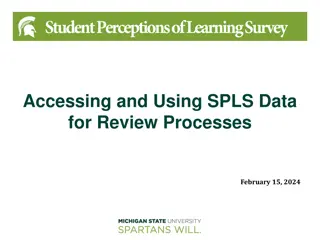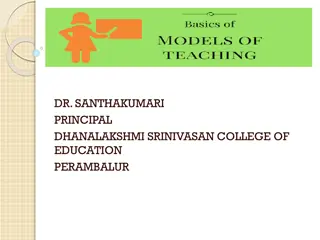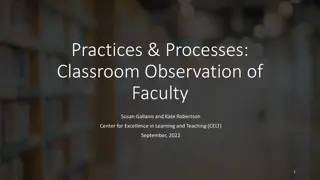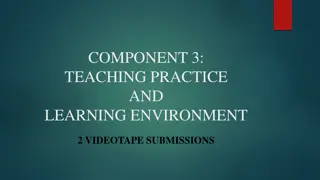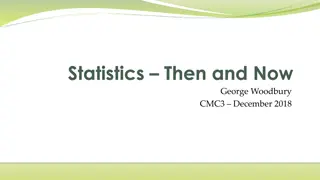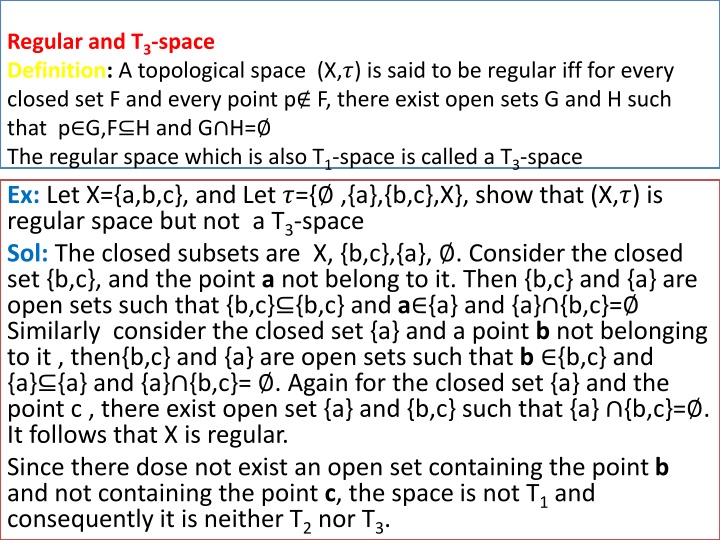
Understanding Regular and T3 Spaces in Topology
Explore the definitions of regular and T3 spaces in topology, with examples illustrating the concepts. Learn about the properties of regular spaces, T3 spaces, and their relationship with T2 spaces. Discover the theorems and proofs related to regular spaces as a topological property.
Download Presentation

Please find below an Image/Link to download the presentation.
The content on the website is provided AS IS for your information and personal use only. It may not be sold, licensed, or shared on other websites without obtaining consent from the author. If you encounter any issues during the download, it is possible that the publisher has removed the file from their server.
You are allowed to download the files provided on this website for personal or commercial use, subject to the condition that they are used lawfully. All files are the property of their respective owners.
The content on the website is provided AS IS for your information and personal use only. It may not be sold, licensed, or shared on other websites without obtaining consent from the author.
E N D
Presentation Transcript
Regular and T3-space Definition: A topological space (X,?) is said to be regular iff for every closed set F and every point p F, there exist open sets G and H such that p G,F H and G H= The regular space which is also T1-space is called a T3-space Ex: Let X={a,b,c}, and Let ?={ ,{a},{b,c},X}, show that (X,?) is regular space but not a T3-space Sol: The closed subsets are X, {b,c},{a}, . Consider the closed set {b,c}, and the point a not belong to it. Then {b,c} and {a} are open sets such that {b,c} {b,c} and a {a} and {a} {b,c}= Similarly consider the closed set {a} and a point b not belonging to it , then{b,c} and {a} are open sets such that b {b,c} and {a} {a} and {a} {b,c}= . Again for the closed set {a} and the point c , there exist open set {a} and {b,c} such that {a} {b,c}= . It follows that X is regular. Since there dose not exist an open set containing the point b and not containing the point c, the space is not T1and consequently it is neither T2nor T3.
Ex: Show that (R,U) is a T3-space . Sol: Let F be a U-closed subset and let x R, such that x F. Since F is closed set and x F, it follows that x is not an accumulation point of F . hence there exists an >0 such that (x- , x+ ) F= ..(1) Let G=(x- \4,x+ |4) and Let H=U{(y- \4,y+ \4); y F}. Then x G and F H. we now show that G H= . If possible, let z G H, the z G and z H, that is z (x- \4,x+ |4) and z (y0- \4,y0+ \4) for some y0 F. Then |x-z|< \4 and |z- y0|< \4. Hence |x- y0|=|(x-z)+(z- y0)| |x-z|+|z- y0|< \4 + \4< . It follows that y0 (x- , x+ ). Since y0 F, this contradicts (1). Hence G H= . Thus there exist open sets G and H such that G H= , so (R,U) is regular space and since (R,U) is T1-space , it follows that (R,U) is T3-space.
Theorem: A topological space X is regular iff for every point x X and every nbd N of x , there exist a nbd M of x such that clM N . Proof :"only if part" let N be any nbd of x then there exist an open set G such that x G N. Since Gcis closed and x Gc, But the space is regular , two disjoint open set L and M such that Gc L and x M. So that M Lcit follows that, clM clLc=Lc--------- (1) Also Gc L Lc G N-----(2) From (1) and (2) we get clM N . The"if part" let the condition hold. Let F be any closed subset of X and x F then x Fc, Since Fcis an open set containing x, so by ypothesis an open set M such that x M and clM Fc F (clM)c. Then (clM)cis an open set containing F also M Mc= , then M (clM)c= . So the space is regular
Ex: Every T3-space is a T2-space Sol: Let (X,?)be a T3-space , and let x,y be any two distinct point. Now by definition of X, the space is T1 and so {x} is a closed set also y {x}. Since X is regular. two open set G and H such that y G {x} H & G H= , but x {x} H, hence the space is T2. Theorem: the property of space being a regular space is a topological property Proof: Let (X,?) be a regular space and let (Y, ) be a homeomorphic image of (X,?) under a homeomorphism f. To show that (Y, ) is also regular space. Let F be a closed subset of Y and let q be a point of Y such that q F. Since f is one-to-one onto function there exist p X such that f(p)=q iff f-1(q)=p. Again since f is continuous f-1(F) is closed in X. Also q F then f-1(q) f-1(F). Thus f-1(F) is a closed set and p is a point of X such that p f-1(F). Since X is regular space there exist open sets G and H such that p G, f-1(F) H and G H= . p G then f( p) f(G) then q f(G) also f-1(F) H then f( f-1(F)) f(H) then F f(H) and G H= then f(G) f(H)=f(G H)=f( )= , Since f is an open function G1=f(G) and H1= f(H) are open set in Y. So (Y, ) is regular. Theorem: The property of a space being a regular space is hereditary.
Theorem: Every compact Hausdorff space is a T3-space Proof : Let (X,?) be compact Hausdorff space To show that (X,?) is a T3-space . Since a Hausdorff space is a T1-space , it suffices to show that (X,?)is a regular , let F be a closed subset of X and let p X such that p F, so p X\F, since (X,?) is a Hausdorff space so for every x F, there must exist two open sets G(x) and H(x), such that p G(x), x H(x) and G(x) H(x) = ..(*) The collection C={H(x); x F } is open cover of F. Since F is a closed subset of a compact space X, so that F is compact (by theorem ). Hence there exists a finite numbers of points x1,x2,..,xnin F such that F U{H(xi),i=1,2,...,n},let H=U{H(xi),i=1,2,...,n} and G = {G(xi), i=1,...,n }. Then p G , since p G(xi) for each xialso G H= , [other wise G (xk) H (xk) for some xk F this contradict(*)] hence the space is regular


